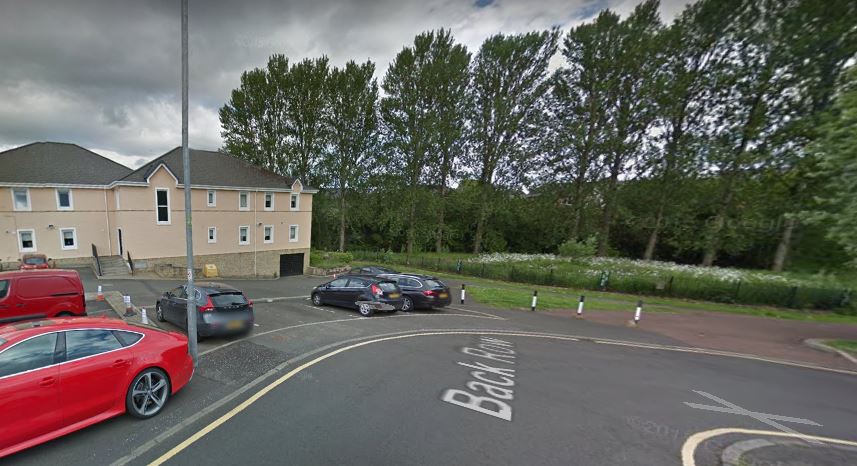
Hamilton has long outgrown the days when every school boy knew the town like the palm of his hand and could give an interesting precise on the local “who’s who”. Now one can get lost in a labyrinth of streets with not a kent face in sight, for the separate communities that compromise the whole have no common bond, except perhaps the supermarkets, the libraries and the ever increasing burden of paying for the mammoth development schemes.
In the process Auchingramont Road has become just another thoroughfare cluttered with parked cars. Structurally it is little changed although the north church has been demolished and replaced by a block of flats called “Gramont” and several villas have been concerted in to office. Lately the Glen hotel has put the area on the motorists’ map, it being recommended by the automobile associations.
Formally the residents would have stood aghast at such intrusions. In fact, it is doubtful weather Auchingramont proprietors would have allowed it, as they permitted nothing or no one to interfere with the amenities of the road.
COUNTRY QUIET LANE
They had every reason to be proud of it, for its air of elegance and grace could not be matched elsewhere. It was as peaceful and quiet as a country lane, with the sanctity of the churches pervading the atmosphere. Its beauty entered the soul and one felt refreshed and stimulated physically and mentally.
Doctors, Lawyers, ministers and bankers were representative householders, whose illustrious careers were followed by the general public. Character and breeding shone from every window, but wealth was never blatantly exposed to incite resentment or envy in poor citizens. Rather it appeared as something substantially worth wile, and inspired dreams of achievement without covetousness.
A stroll along Auchingramont was always a pleasure; there was so much to admire and delight to the eye. It is still a lovely residential area but that indefinable something which defies analysis or description has to some extent disappeared.
BUSIEST ON SUNDAYS
In the old days Auchingramont Road was busiest on Sundays, for each of the three churches had good congregations. After morning service, the worshippers were wont to standing little grounds outside their church discussing the sermon or perhaps evaluating a lady’s ensemble. The vicar of St. Mary’s was usually in evidence, and his engaging smile and friendly manner left a lasting impression on many an onlooker.
When the death of Edward the peacemakers was announced, the Episcopalians were first to hold a special service. Women hurriedly acquires black hats, and gloves then rushed to the church, accompanied by young daughters whose mark of defiance consisted of black velvet ribbon tied round their necks. some wore borrowed hats, so that they appeared more like guys dressed for Halloween than mourners. But it was a sad and moving occasions and the laughs at the weird attire were reserved for after. Memorial services were held in other churches, Auchingramont, North being elaborately draped in purple and black.
My dearest memories of Auchingramont, however, centre around the North Church, particularly during the ministry of the Rev Thomas Brown M.A. and that of the Rev John McCallum, Robertson M.A. I can still hear Mr Robertson’s talk on “The House with the Green Shutters”. His Sunday evening disclosures drew people from far and wide and filled the church to overflowing, so that they had sometimes to sit on the balcony steps. He was a great orator. Thus his successor began with a disadvantage. Mr Brown however was warm-hearted and easier to approach than the scholarly Mr Robertson.
FIRST MINISTER
The first minister of Auchingramont was the Rev Peter C Duncanson, who came with the congregation from the relief church in Muir Street, now part of Smellie’s Market. The church dates back to 1776 and its exiting history has been written by Baillie James F Hamilton, a man of high endeavour and personal magnetism.
I possess a stucco bust of Duncanson which was executed by J Mossman and originally belonged to the Bishop family of Barncluith. It was given to my grandparents, who never tired of telling how much pleasure it gave their beloved minister to see his image on their mantelshelf.
The new church was opened on 24th November 1867. Special services were held and Dr Johnston, limekilns occupied the pulpit in the morning. Mr Duncanson officiated in the afternoon and Dr Eadie in the evening. The collections for the day amounted to £202.3s.4d.
The church cost £5,233.13.7d and the manse £1,703.19s. The old church was sold for £525. This, together with various contributions and the proceeds from a bazaar held in the Town Hall, considerably reduced the sum outstanding. But it took 26 years, a second bazaar held at the Art Galleries, Glasgow in October 1884, and a third held in the Town Hall in 1893 to liquidate the debt. The ladies of the congregation made every effort to make the bazaar a success and the £3,180 raised in this way was a very gratifying result.
Mr William Cassels personally collected £105 – the cost of the bell erected in the tower. I may have been prejudiced but as a child i considered it had the most melodious and distinctive tone of any bell in Hamilton. The bellringer then was Mr Scott of Selkirk Street and the Beadle was Mr Williamson.





